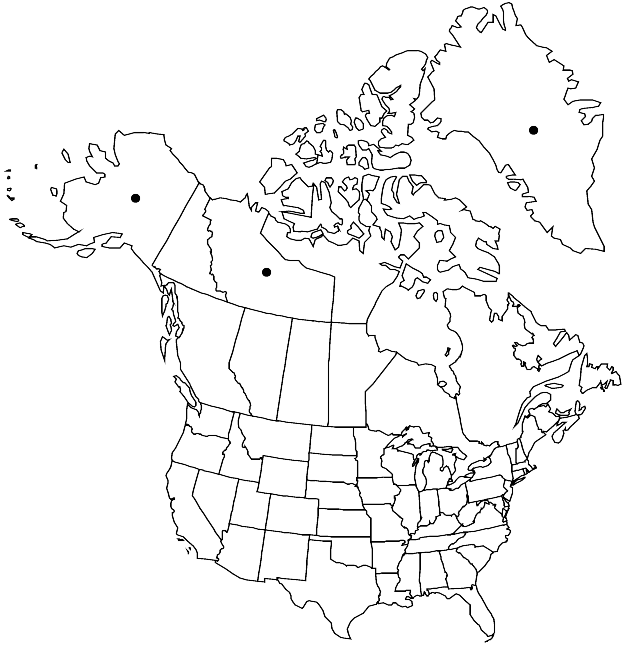Plagiothecium berggrenianum
Lindbergia 7: 96, fig. 2a – i. 1982.
Plants in dense tufts, light green to yellowish, glossy. Stems to 8 cm, 1–1.5 mm wide across leafy stem, erect, julaceous. Leaves erect, closely imbricate, ovate or oblong-ovate, symmetric, concave, 1.5–2.5 × 0.8–1.2 mm; margins broadly recurved throughout, entire or denticulate at apex; apex acuminate, not abruptly contracted, usually recurved; costa with one branch sometimes reaching 1/3 leaf length; alar cells rectangular or inflated and oval, 40–60 × 9–24 µm, in 2–4 vertical rows, terminating in 1 cell at base, region triangular or rarely somewhat oval; medial laminal cells 85–141 × 6–12 µm. Specialized asexual reproduction unknown. Sexual condition unknown. Sporophytes unknown.
Habitat: Swales, wet tundra, rocky slopes, cliffs
Elevation: low to moderate elevations (0-1200 m)
Distribution

Greenland, N.W.T., Alaska, n Europe (Norway).
Discussion
Plagiothecium berggrenianum is an Arctic species that has been confused with P. cavifolium, or with julaceous forms of P. denticulatum and P. laetum. The acuminate leaves with recurved apices separate P. berggrenianum from P. denticulatum, while the inflated, oval cells in the decurrencies will distinguish it from P. cavifolium and P. laetum.
Selected References
None.